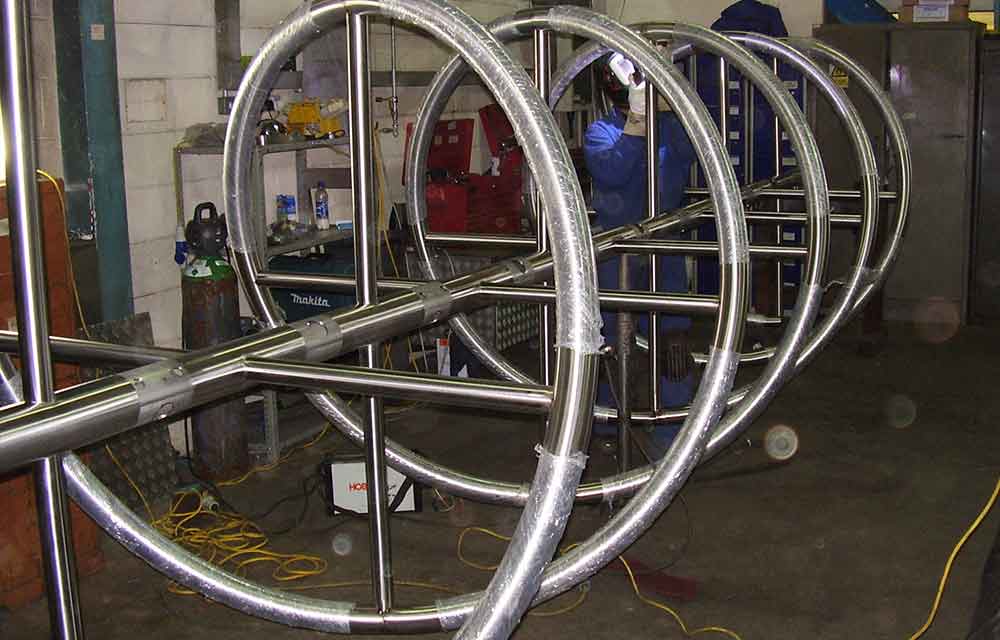The use of architectural metal for open-air spaces has gained significant traction in recent years. With an increasing emphasis on sustainability and aesthetics, metal offers a versatile solution for modern design. Whether you are an industrial manufacturer or a designer, understanding the potential of metals in open-air settings can provide numerous benefits.
Architectural metal is not only about creating stunning visuals but also about enhancing durability and functionality. Metals such as steel and aluminum are favored for their resilience and ability to withstand harsh weather conditions. This makes them ideal for outdoor environments.

The Rise of Architectural Metal
The trend of using architectural metal in open-air spaces is part of a broader movement towards innovative and sustainable design solutions. Metals have become a preferred choice for architects and designers due to their adaptability and strength.
Benefits of Using Metal
Architectural metals offer several advantages, including:
- Durability: Metals like steel and aluminum are known for their long-lasting nature, making them perfect for outdoor use.
- Versatility: These materials can be shaped and formed into various designs, allowing for creative expression in architectural projects.
- Eco-Friendliness: Metal is recyclable, reducing the environmental impact of construction projects.
Types of Metals Used
Common metals used in open-air spaces include:
- Steel: Known for its strength and durability, steel is a popular choice for structural elements.
- Aluminum: Lightweight and resistant to corrosion, aluminum is ideal for decorative elements.
- Copper: With its distinctive color and natural patina, copper is often used for aesthetic purposes.
Applications in Open-Air Spaces
There are numerous applications for architectural metal in open-air spaces, ranging from functional to purely decorative:
Shelters and Canopies
Metals are often used to construct shelters and canopies, providing protection from the elements while adding a modern touch to public spaces.
Facades and Cladding
Metal facades and cladding are popular for their sleek appearance and ability to withstand weather changes, making them ideal for urban environments.
Outdoor Furniture
Robust and stylish, metal furniture is a common sight in open-air settings, offering both comfort and durability.
Case Studies
Examining successful projects can provide insights into the effective use of architectural metal for open-air spaces. Consider projects such as urban renewal initiatives, where metal elements play a crucial role in revitalizing public areas.
Urban Renewal Projects
Incorporating metal in urban renewal projects can enhance the aesthetic appeal of a city while also providing functional benefits. For more insights, visit metal fabrication for urban renewal.
Water Features
Metals are also used in water features, adding elegance and sophistication to parks and public spaces. Learn more about this application by visiting metal for water features.
Challenges and Considerations
While architectural metal offers many benefits, there are challenges to consider, such as:
- Cost: High-quality metal can be expensive, though its durability often offsets the initial investment.
- Maintenance: Metals require regular maintenance to prevent corrosion and maintain their appearance.
Future Trends
The future of architectural metal in open-air spaces looks promising, with ongoing advancements in metal technology and design techniques. Expect to see more innovative uses of metal in outdoor settings.
Conclusion
Incorporating architectural metal into open-air spaces offers numerous benefits, from durability to aesthetic appeal. As urban areas continue to grow, the demand for sustainable and versatile materials like metal will only increase.

FAQ
Q1: What are the main advantages of using metal in open-air spaces?
A1: The main advantages include durability, versatility, and eco-friendliness, making them ideal for outdoor environments.
Q2: What types of metals are commonly used in architectural applications?
A2: Common metals include steel, aluminum, and copper, each offering unique benefits for different applications.
Q3: How can metal contribute to sustainable design?
A3: Metal is recyclable and durable, reducing the need for frequent replacements and minimizing environmental impact.
For more detailed information on architectural metal, you can visit what is architectural metal.
This article contains affiliate links. We may earn a commission at no extra cost to you.

